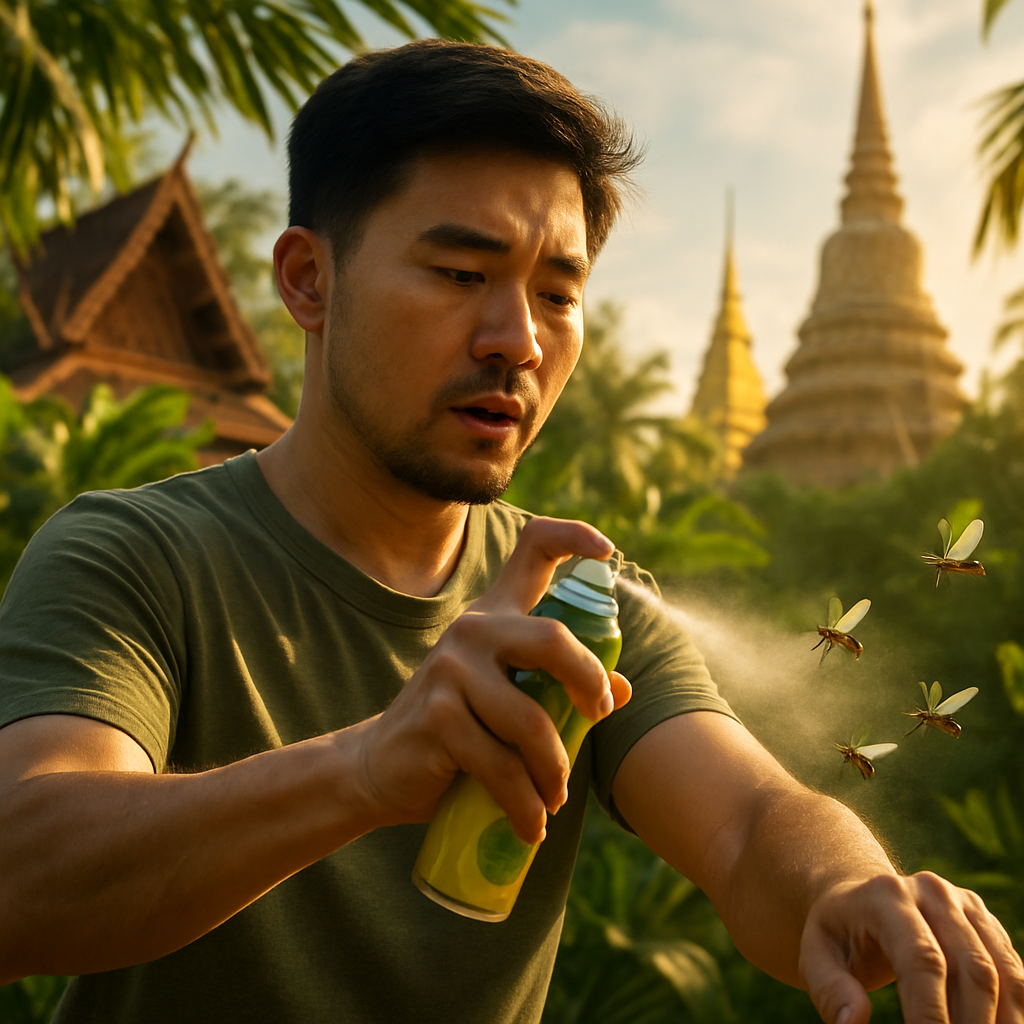In the tropical tapestry of Thailand, where the skies are draped in azure allure and the landscapes hum with vibrant life, a silent adversary lurks, as captivating as it is cunning. Health authorities have brandished the cautionary flag, urging the denizens of Thai soil to arm themselves against the minuscule menace that is the sandfly—nature’s minature vampire, and the infamous vector of leishmaniasis. A name that echoes with an insidious cadence befitting of its unwelcome nature.
The alarm bells ring louder this year, not just as an academic abstraction, but as a determined call to action. This comes in the wake of two tragic fatalities, marking an undeniable crescendo of concern around this parasitic puppet master. The unfortunate victims hailed from disparate locales—one from the bustling heart of Bangkok, and the other from the serene stretches of Songkhla—showcasing the disease’s indifferent reach across Thai boundaries. Dr. Jurai Wongsawat, the articulate voice and spokesperson for the Department of Disease Control, steers the public spotlight onto this malady’s discomfiting presence, outlining a stark trajectory from benign record-keeping since 1996 to a more ominous reality today.
Leishmaniasis, a cryptic word concealing its sinister potential, is spread by the bite of sandflies—tiny, nearly imperceptible antagonists whose impact far belies their size. The disease paints a grim picture on its victims, from mild nuisances such as disagreeable skin nodules—an unwelcome decoration on the body’s canvas—to the much more harrowing specters of organ damage. For the unfortunate few who meet the full monty of this disease’s potential, life becomes a desperate dance. Severe cases might involve an unending fever, pallor as debilitating as it is visible, and an ominously enlarged spleen—an unfortunate traveler’s trifecta that can culminate in the ultimate demise.
“Diagnosis is a cornerstone,” Dr. Jurai implores, her medical sagacity cutting through ignorance like a beacon. She dispels the myth of contagion through mere touch, urging instead a pragmatic adherence to protective rituals. Insect repellent becomes a technicolor talisman, gaps in clothing are fortified with resilient fabric, and a clean environment stands as a bulwark against this diminutive marauder—measures that resonate with the same echo of precaution familiar from the campaigns against the region’s more notorious villain: dengue.
In this vibrant land, where the clash and clang of life come at a frenetic pace, public vigilance has become more than an act of self-preservation. It is a community watch that swells beyond individual borders, uniting the intimate with the grand. As the days of 2025 meander onwards, health authorities invite every resident, every visitor, to join in this vigilance; co-authors in a narrative that strives for safety, that battles shadow with light, and casts sandflies back into insignificance, where they rightfully belong.


















I’m really concerned about the rise of leishmaniasis. It’s a serious issue that requires immediate action from everyone.
Honestly, I don’t think it’s that big of a deal. There are more serious health issues to address.
Ignoring it won’t make it go away. Awareness and prevention should be a priority too.
Prevention might seem minor, Tommy, but it’s crucial in controlling outbreaks. It’s better than dealing with the aftermath.
Thailand’s proactive measures are commendable but public participation is key. Everyone needs to adhere to the preventive steps.
Are you implying that not everyone is taking this seriously? People love their freedom!
Freedom is important, Sam, but it shouldn’t come at the cost of public health. Collective responsibility is essential here.
Sam, freedom without responsibility can harm more than just the individual. It impacts society as a whole.
This feels similar to how we ignored climate change. Will we learn from past mistakes?
Exactly my thoughts! We can’t just shrug off these warnings like before.
Right? If we act now, we’d save so much trouble down the line.
Comparing diseases to climate change is a bit of a stretch, don’t you think?
Is there really a need for extreme measures? Sandflies aren’t exactly new.
I think increased awareness is justified given the rising cases, John.
It’s not just about the sandflies. It’s the disease they carry. We shouldn’t underestimate it.
What about those living in rural areas? They might not have access to repellents.
Good point. Government should ensure supplies reach everywhere, especially remote areas.
Fascinating how natural threats persist in modern times. Makes you wonder about the balance of nature.
I lived in Songkhla once. Sad to hear about the cases there, but education is the best defense.
How serious is leishmaniasis compared to dengue? I’ve heard horror stories about both.
Both are serious, Kira. But the type of care and prevention can vary. It’s best to protect against both.
They’re different beasts, Kira. Best to stay informed on symptoms and preventative measures.
The article paints quite the picture. It’s almost poetic how intertwined nature and human health are.
Anything tech can do to prevent disease these days? Apps and gadgets have helped in the past!
Great thought! Maybe tracking apps or even smarter repellents could work.
I’m curious about how travelers are being advised. Would this impact tourism?
Raises an interesting point about how such insects impact global health. The balance is delicate.
I hope they’re taking notes from other countries who’ve dealt with similar outbreaks. Collaboration is key.